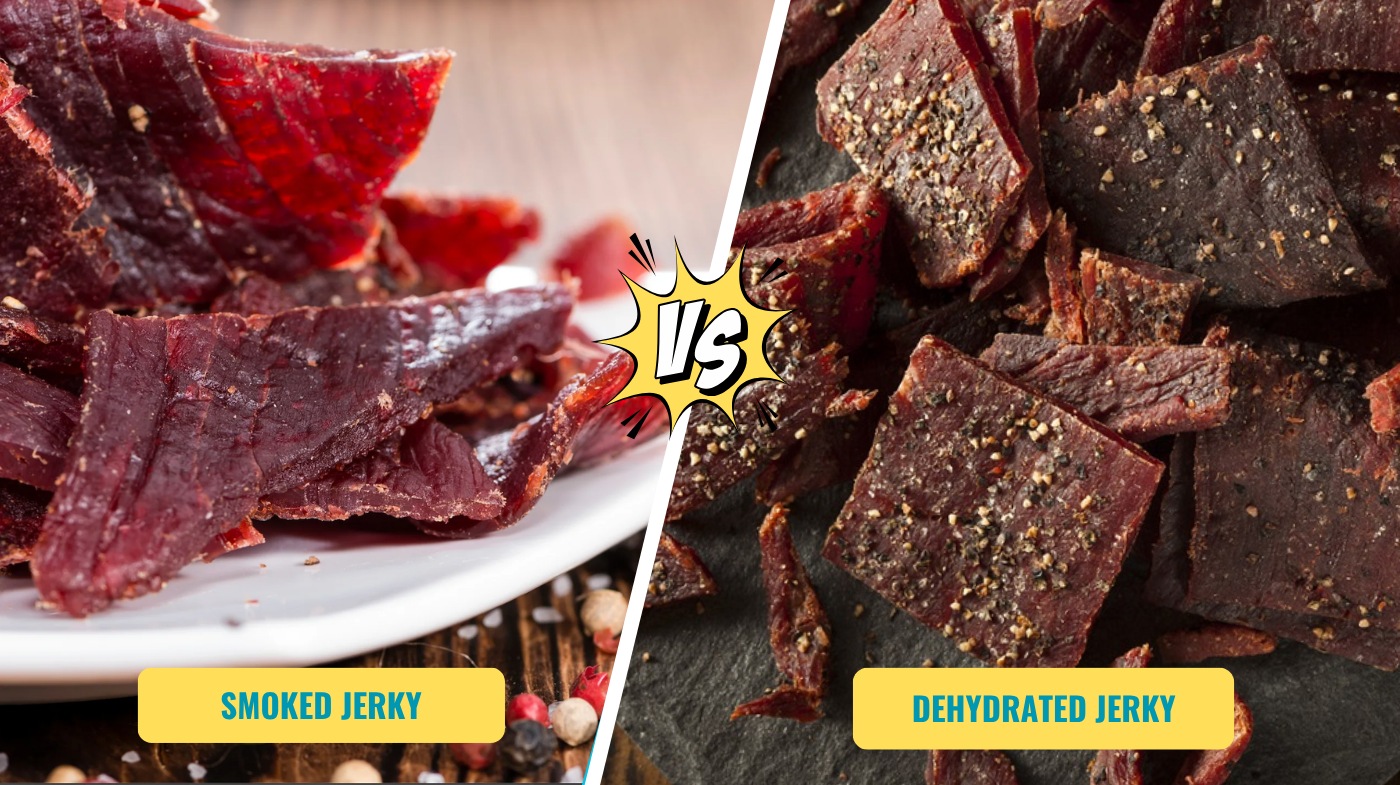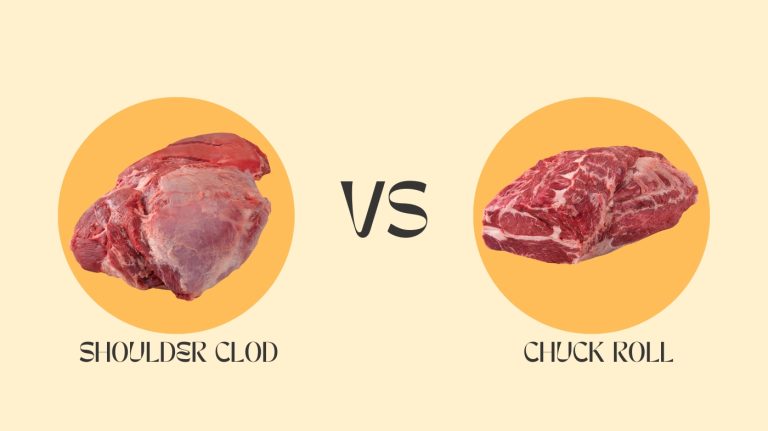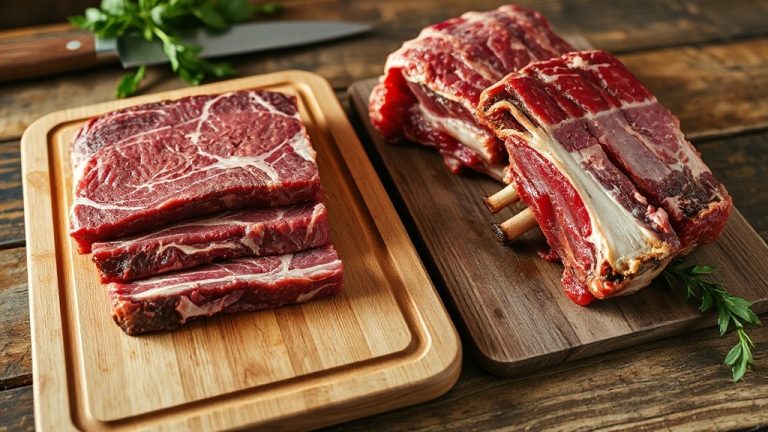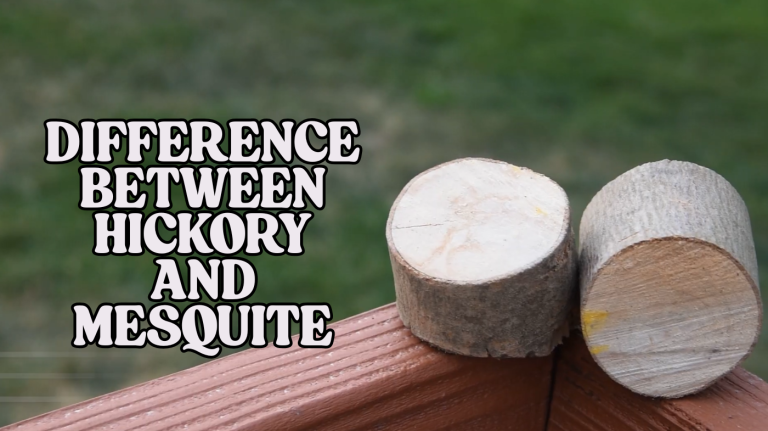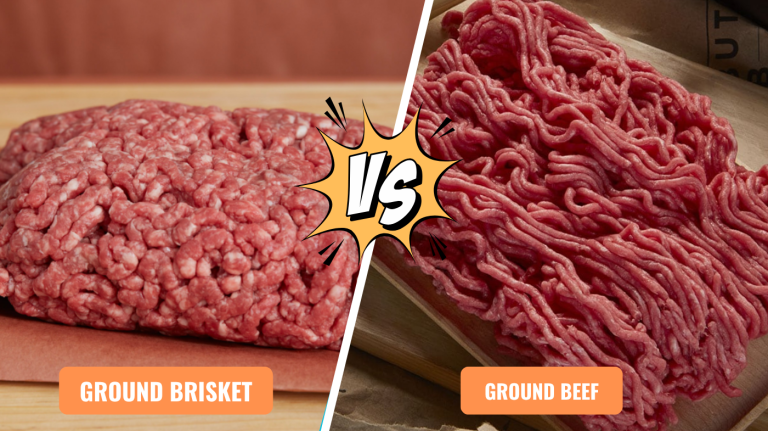Smoked Jerky vs Dehydrated Jerky: Taste the Key Difference
You’ll find smoked jerky offers richer, layered smoky flavors with a chewier, moister texture thanks to hardwood smoke and slower heat application.
In contrast, dehydrated jerky delivers a cleaner, meat-forward taste with a firmer, drier bite through efficient low-heat drying. Nutritionally, smoked jerky retains more antioxidants but often contains higher sodium, while dehydration concentrates protein with lower fat.
Each method influences shelf life and production complexity differently—explore these nuances to match your taste and lifestyle preferences.
Key Takeaways
- Smoked jerky features a smoky, layered flavor, while dehydrated jerky emphasizes a clean, pure meat taste.
- Smoking involves complex temperature and smoke control; dehydration uses simpler, energy-efficient heat and airflow.
- Smoked jerky retains moderate moisture for a chewier texture; dehydrated jerky is drier and firmer with uniform toughness.
- Smoked jerky generally has higher sodium and longer shelf life due to antimicrobial smoke compounds and curing.
- Dehydrated jerky concentrates protein more, has fewer calories, and requires careful seasoning to enhance flavor.
Smoked Jerky and Dehydrated Jerky Comparison Table
| Aspect | Smoked Jerky | Dehydrated Jerky |
|---|---|---|
| Flavor Profile | Rich, layered smoky flavors with complex wood-infused taste | Clean, pure meat taste with concentrated essence |
| Texture | Chewier and moister with variable tenderness | Firmer and drier with uniform consistency |
| Equipment Needed | Specialized smokers with temperature, humidity, and smoke controls | Simple electric dehydrators with basic heat and airflow |
| Process Complexity | Multi-stage process requiring skill and constant monitoring | Single-step drying with minimal supervision needed |
| Production Time | Longer cycle times (several hours with careful adjustments) | More efficient (4-24 hours with consistent results) |
| Nutritional Content | Higher sodium from curing salts; retains more antioxidants | Lower fat and calories; concentrates protein more effectively |
| Shelf Life | Slightly longer due to antimicrobial smoke compounds | Good preservation through complete moisture removal |
| Moisture Content | Moderate moisture retention (50-60% humidity) | Very low moisture (water activity ~0.71) |
The Art and Science of Smoking Jerky
When you smoke jerky, selecting the right wood is essential because it directly shapes the flavor profile. Hardwoods like hickory and applewood produce cleaner, milder smoke, while softwoods risk imparting undesirable resinous notes.
You’ll want to soak wood chips for 10-15 minutes to modulate smoke density and temperature, ensuring blue smoke, which signals ideal combustion, rather than white smoke that causes bitterness.
Each wood’s chemical composition interacts differently with meat proteins, allowing you to complement or mask natural flavors. Proper smoke application—moderate exposure for 30-60 minutes—infuses complexity without bitterness.
Positioning strips spaced out maximizes airflow and even drying. This precise control over wood choice and smoke quality makes smoking jerky both an art and a science, providing a distinct, nuanced product beyond simple dehydration methods.
Additionally, maintaining a smoker temperature under 120°F (49°C) is crucial for cold smoking, preserving food safety while achieving the desired texture. Using temperature control during smoking ensures the jerky reaches safe internal temperatures without compromising texture or flavor.
Understanding the Dehydration Process
Smoking imparts complex flavors through carefully controlled wood combustion, but dehydration relies on precise moisture removal to preserve meat.
You reduce moisture content to inhibit bacterial growth by maintaining consistent temperatures between 140°F and 165°F.
It is important to remove fat and gristle because they can reduce shelf life and cause rancidity during storage. For safety, reheating jerky should reach an internal temperature of at least 165°F before consumption.
Drying times vary—typically 4 to 24 hours—depending on meat thickness, marinade, and airflow. Proper airflow and spacing prevent uneven drying and spoilage. Using electric dehydrators or ovens with racks and venting ensures uniform drying.
You’ll want meat slices about 1/8 inch thick and lean to optimize dehydration speed and shelf life. Check jerky frequently after three hours; it’s done when firm yet flexible, bending without breaking, and showing slight surface cracking.
Flavor Profiles: Smoky Richness vs. Pure Essence
Although both smoked and dehydrated jerky undergo drying processes to guarantee preservation, their flavor profiles diverge considerably due to the presence or absence of smoke infusion.
Smoked jerky offers smoky richness with layered complexity, while dehydrated jerky emphasizes a pure, concentrated meat essence. Wood type in smoking deeply influences flavor nuances, whereas dehydrated relies more on seasoning boldness.
Additionally, the use of smoked paprika can enhance the smoky depth in marinades or finishing spices. Proper slicing against the grain ensures the texture and drying consistency required for both methods.
| Aspect | Smoked Jerky | Dehydrated Jerky |
|---|---|---|
| Flavor Source | Wood smoke infusion | Marinades and spices |
| Flavor Complexity | Multi-layered, smoky, earthy | Clean, meat-forward |
| Texture | Chewy, rich mouthfeel | Crisper, drier |
| Influencing Factors | Type of wood, smoke duration | Spice blend, salt profile |
Nutritional Comparison Between Smoked and Dehydrated Jerky
You’ll find both smoked and dehydrated jerky offer high protein content, but dehydration typically yields a denser protein concentration due to greater moisture loss.
Smoking retains essential vitamins better and introduces antioxidants, while dehydrated jerky often contains less fat and calories.
This is because smoking provides a slow cooking process that enhances flavor absorption and preserves nutrients. Additionally, the use of smoked paprika and liquid smoke can intensify the smoky aroma and complexity in smoked jerky.
Sodium levels vary considerably, with dehydrated jerky generally having higher salt content to guarantee preservation.
Protein and Nutrient Content
When comparing smoked and dehydrated jerky, you’ll find both methods preserve protein content effectively, typically delivering 10 to 16 grams of complete protein per one-ounce serving.
Dehydration removes moisture, concentrating protein without significant loss, while smoking retains protein and introduces antioxidant compounds that may enhance protein utilization.
Both provide all essential amino acids necessary for muscle recovery. Nutrient retention differs slightly: smoked jerky tends to preserve more heat-sensitive vitamins like B12 and folate due to lower processing temperatures, whereas dehydration may degrade these.
Essential minerals such as iron, zinc, and phosphorus remain stable in both. Additionally, smoking infuses antioxidants absent in dehydrated jerky, potentially offering added health benefits.
Using oak wood for smoking can enhance flavor and contribute to the preservation process. Therefore, your choice depends on whether you prioritize vitamin retention and antioxidant presence or maximal nutrient concentration from moisture removal.
Compared to other snack options like chips, beef jerky—whether smoked or dehydrated—offers a healthier profile with fewer calories and more protein, making it a nutrient-dense choice.
Sodium and Fat Levels
Since curing processes typically accompany smoking, smoked jerky usually contains higher sodium levels due to added curing salts and nitrites. This elevated sodium content is significant because 1 oz of beef jerky provides about 22% of daily sodium, which can impact heart health.
In contrast, dehydrated jerky’s sodium content depends largely on the marinade or brining solution used before drying. Proper temperature consistency during smoking also impacts the safety and preservation of smoked jerky.
You’ll find smoked jerky consistently has elevated sodium, often ranging from 150 to 500 mg per serving, which can notably impact your daily intake and cardiovascular health.
Fat levels in both types hinge on the meat cut rather than drying method; smoking doesn’t inherently reduce fat, so fat content remains similar unless you select lean cuts.
Dehydrated jerky made from lean meat offers lower fat options. Both methods reduce moisture but preserve fat, affecting taste, shelf life, and caloric content.
Preservation Techniques and Shelf Life Differences
Although both smoked and dehydrated jerky aim to preserve meat by reducing moisture and inhibiting microbial growth, they employ distinct mechanisms that affect shelf life differently.
Smoked jerky uses slow cooking over wood smoke, combining heat and antimicrobial smoke compounds like phenols, often with salt curing, to enhance preservation beyond moisture removal.
The smoking process typically takes several hours and not only adds flavor but also helps in flavour infusion and preservation. Additionally, the choice of wood pellets, such as hardwood or fruitwood, can influence the final smoky flavor profile of the jerky.
Dehydrated jerky relies solely on heat and air circulation to reduce water activity (~0.71), inhibiting microbes primarily through dryness. Consequently, dehydrated jerky offers chemical stability with minimal fat-induced rancidity risk, while smoked jerky’s fats can oxidize unless stored properly.
Dehydration can be achieved using a dehydrator, oven, or sun-drying methods at controlled temperatures between 50–70°C, which ensures consistent drying and texture.
Both methods produce shelf-stable products, but smoked jerky typically achieves slightly longer shelf life due to antimicrobial smoke and curing effects.
Proper cool, dark storage and airtight packaging remain critical for maximizing longevity in both preservation techniques. Vacuum sealing is often used to further extend shelf life by preventing exposure to air and moisture.
Equipment Needs and Process Complexity
Understanding the preservation benefits of smoked and dehydrated jerky leads naturally to examining their differing equipment demands and process intricacies.
Smoking requires specialized smokers or pellet grills with precise temperature, humidity, and smoke control systems, plus ample space for racks and airflow management. You’ll also need to monitor internal meat temperature carefully to ensure safety and flavor balance.
This multi-stage process demands skillful adjustments over extended periods. For example, the smoking process involves staged temperature and humidity control to reach a safe internal temperature of 160°F, which ensures proper preservation.
Multi-stage process Proper airflow management is crucial in smoking to maintain consistent temperature and smoke levels throughout the cooking cycle.
Smoking jerky demands specialized equipment, precise controls, and careful temperature monitoring for safety and flavor.
In contrast, dehydrating jerky uses compact electric dehydrators with controlled heat and airflow, simplifying the operation. The process is a single-step drying after cooking, requiring minimal supervision and less expertise.
Dehydrators also produce less ash and require simpler cleanup compared to smoking methods that often use charcoal briquettes or wood fuels.
Dehydrators are more energy-efficient, space-saving, and scalable for batch production, while smoking’s complexity and longer cycle times increase labor and operational costs, limiting efficiency and scalability.
Texture and Mouthfeel Variations
You’ll notice smoked jerky offers a chewier, more tender bite due to retained moisture and smoke-induced fiber changes. This process imparts a rich, smoky flavor that enhances the overall sensory experience.
In contrast, dehydrated jerky delivers a firmer, drier texture with uniform toughness from nearly complete moisture removal. Understanding how moisture content modulates chewiness and tenderness is key to distinguishing these two jerky types.
Chewiness and Tenderness
When comparing chewiness and tenderness in jerky, you’ll notice dehydrated jerky delivers a consistently tender texture due to its controlled drying process, which evenly breaks down muscle fibers. This results in a uniform softness that eases chewing and swallowing.
Dehydrated jerky’s gentle process can help preserve the nutritional profile of the meat, maintaining beneficial fats and proteins.
In contrast, smoked jerky exhibits a firmer, chewier mouthfeel caused by slower heat and smoke exposure that coagulates proteins and densifies the surface.
The variable factors in smoking—such as wood type and duration—create texture inconsistencies, contributing to occasional toughness. Smoking typically takes less time than dehydrating, often around 2-3 hours at 150°F, which influences its texture development smoking time.
You’ll find smoked jerky’s robust chew complements its bold flavor profile, requiring longer mastication, while dehydrated jerky provides a balanced mouthfeel where marinade flavors burst without overwhelming resistance. Your choice hinges on whether you prefer tender ease or a resilient bite with intensified smokiness.
Moisture Content Impact
Although both smoked and dehydrated jerky undergo drying processes to guarantee safety and preservation, their differing moisture content levels considerably influence texture and mouthfeel.
Smoked jerky retains moderate moisture due to controlled humidity (50-60%) during slow smoking, yielding a softer, denser texture with fibrous tenderness enhanced by smoke oils.
In contrast, dehydrated jerky’s low moisture—achieving water activity near 0.71—produces a uniformly dry, crisp texture with firmer, less pliable chew. This moisture disparity affects mouthfeel: you’ll notice smoked jerky feels juicier and richer, while dehydrated jerky presents a leaner, drier sensation that risks becoming powdery if over-dried.
Additionally, moisture gradients in smoked jerky cause textural variability, whereas dehydrated jerky’s consistent airflow ensures uniform dryness, directly impacting palatability and rehydration potential.
Proper moisture retention and temperature control during drying processes are essential to prevent bacterial growth and maintain product safety, similar to how temperature safety is managed when resting brisket.
Choosing the Right Jerky for Your Taste and Lifestyle
Because your taste preferences and lifestyle demands vary, selecting between smoked and dehydrated jerky requires careful consideration of several factors.
Choosing smoked or dehydrated jerky depends on your unique taste and lifestyle needs.
If you prioritize rich, complex flavors and a gourmet experience, smoked jerky’s antioxidant benefits and traditional smoking methods make it ideal, despite its sometimes uneven texture and longer production time. Smoked jerky preserves meat juices, enhancing flavor and moisture content.
Conversely, if convenience, consistent texture, and nutrient retention without additives matter most, dehydrated jerky offers efficient moisture removal, uniform chewability, and extended shelf life suited for active, on-the-go lifestyles.
Both types deliver nutrient-dense, lightweight snacks with excellent preservation, but your choice hinges on balancing flavor depth and artisanal qualities (smoked) against production efficiency and practical portability (dehydrated).
Frequently Asked Questions
Can I Combine Smoking and Dehydration Methods for Jerky?
You can combine smoking and dehydration to optimize jerky’s flavor and texture. Start by smoking the meat to infuse smoky taste and partially dry it while reaching a safe internal temperature of 160°F.
Then, transfer it to a dehydrator set around 160°F to finish drying consistently without overcooking. This dual process prevents case hardening, enhances complexity, and guarantees shelf stability. Just monitor temperature and humidity carefully for best results.
How Does Jerky Storage Affect Flavor Over Time?
You protect jerky by controlling moisture. You preserve flavor by limiting oxygen, and you extend shelf life by maintaining cool, dry conditions.
Storing jerky in airtight, vacuum-sealed packaging slows oxidation and microbial growth. Refrigeration after opening reduces flavor degradation but consume within a week.
Avoid heat, humidity, and sunlight, which accelerate spoilage and off-flavors. Proper storage balances chemical stability and microbial inhibition, ensuring jerky tastes fresher longer.
Are There Safety Concerns Unique to Homemade Smoked Jerky?
Yes, you need to address unique safety concerns with homemade smoked jerky. Smoking alone doesn’t reliably eliminate pathogens like E. coli O157:H7, so you must heat meat to at least 160°F before or after smoking.
Inconsistent smoker temperatures risk bacterial growth, especially if drying is uneven or too slow. Also, wild game may harbor fecal bacteria, heightening contamination risk.
Strict hygiene and proper temperature control are essential to guarantee your homemade smoked jerky is safe.
What Types of Wood Best Complement Different Meats for Smoking?
You should choose wood based on the meat’s flavor profile. For beef, hickory and oak offer bold, traditional smokiness; mesquite is intense but needs careful use. Beef pairs well with hickory, applewood, and pecan for balanced sweetness and nuttiness.
Poultry benefits from mild woods like apple and alder, while game and delicate meats require fruitwoods or alder for subtle, sweet smoke. Blending woods lets you tailor intensity precisely.
Does Marinating Time Differ Between Smoking and Dehydration?
Think of marinating time as the foundation, not the roof, of jerky flavor—you won’t need to change it much based on cooking method. You don’t have to marinate longer for smoking or dehydrating since both require 4 to 24 hours typically.
Factors like meat thickness and marinade strength matter more. Smoking’s heat stages don’t demand extra marination, and dehydration recipes sometimes suggest longer times only to boost flavor, not out of necessity.
Find Your Perfect Bite: Choose Between Smoked and Dehydrated Jerky
When choosing between smoked and dehydrated jerky, you’re steering a flavor and texture crossroads. Smoking infuses your meat with a smoky symphony, while dehydration preserves its pure, unadulterated essence.
Each method demands distinct equipment and impacts shelf life differently. By understanding these precise differences, you can tailor your jerky craft to your palate and lifestyle, ensuring every bite hits the perfect note in your culinary composition.
